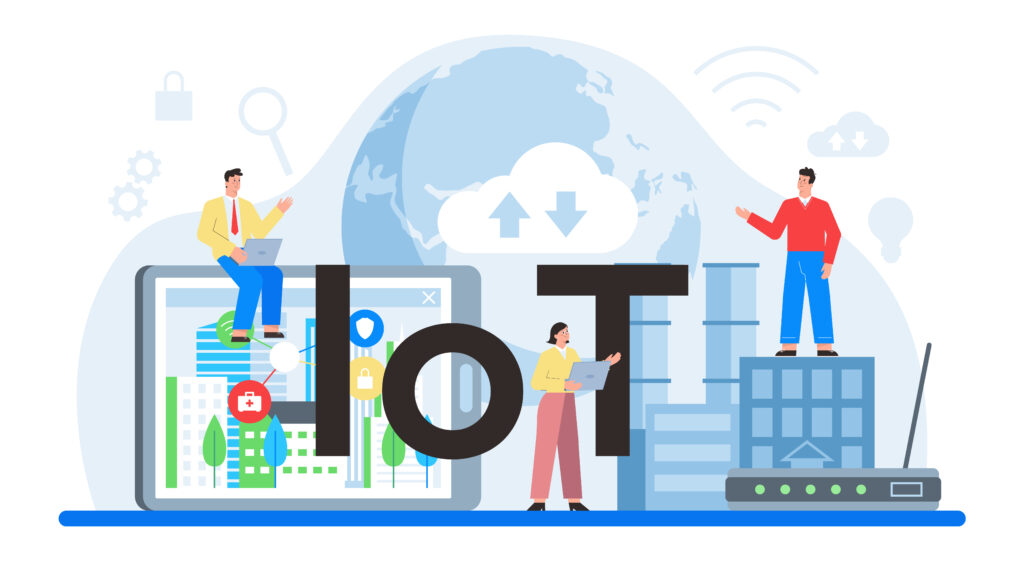In a world where technology connects nearly every aspect of our lives, the Internet of Things (IoT) has emerged as a transformative force. From smart homes and cities to industrial automation and healthcare, IoT devices are revolutionizing how we live and work. However, the exponential growth of IoT has also given rise to a pressing issue: the lack of standardized protocols and interoperability. Fortunately, there is a consortium dedicated to addressing this challenge and shaping the future of IoT.

The IoT Explosion
The concept of IoT revolves around the interconnection of everyday objects, devices, and sensors to the internet. These devices collect and exchange data, enabling them to make intelligent decisions, automate processes, and improve efficiency across various industries. From thermostats that adjust based on our preferences to industrial sensors that monitor equipment health, IoT has the potential to transform the way we interact with the world around us.
The rapid adoption of IoT devices has been nothing short of remarkable. According to Statista, the number of connected IoT devices is projected to exceed 30 billion by 2025, and the global IoT market is estimated to be worth over $1.5 trillion by 2030. However, this growth has brought to light a significant challenge: the lack of uniform standards across the IoT ecosystem.
The Need for Standards
Interoperability is a key concern in the IoT landscape. As IoT devices come from various manufacturers, run on different platforms, and use disparate communication protocols, seamless connectivity becomes a challenge. This fragmentation hinders the full potential of IoT, making it difficult to create cohesive and integrated IoT solutions.
Imagine a smart home with devices from different manufacturers that cannot communicate effectively. Your thermostat may not be able to adjust your air conditioner, and your security cameras may not synchronize with your smart locks. This lack of standardization not only frustrates users but also poses security and privacy risks. Without proper standards, IoT devices may have vulnerabilities that could be exploited by malicious actors.
Moreover, the absence of standards can lead to higher costs for businesses and consumers. Custom integrations and compatibility issues can increase development and maintenance expenses, hindering the adoption of IoT technology.
The Consortium for a Standardized IoT
Recognizing the urgent need for IoT standardization, a consortium called the “Open Connectivity Foundation” (OCF) was formed. OCF is a collaborative effort by industry leaders to create a common framework for secure and interoperable IoT devices. Its mission is to ensure that IoT devices, regardless of the manufacturer, can seamlessly connect, communicate, and work together.
The OCF is made up of prominent companies and organizations from various industries, including technology giants like Microsoft, Intel, Samsung, and Qualcomm. This diverse membership ensures that OCF considers a wide range of perspectives and use cases in developing its standards.
One of the key achievements of OCF is the development of the “IoTivity” framework. IoTivity is an open-source software framework that provides a set of standardized building blocks for IoT device communication. It allows developers to create IoT applications and solutions that work across different platforms and devices, promoting interoperability.
The Benefits of Standardization
The efforts of OCF and similar consortia to standardize IoT have far-reaching benefits for consumers, businesses, and society as a whole:
-
Interoperability: Standardized IoT protocols enable devices from different manufacturers to work together seamlessly, creating a more user-friendly and integrated experience.
-
Security: Standardization helps establish best practices for security, reducing the risk of vulnerabilities and cyberattacks on IoT devices.
-
Cost Savings: Businesses can save money by avoiding the need for custom integration solutions and addressing compatibility issues.
-
Accelerated Innovation: Developers can focus on creating innovative IoT applications instead of wrestling with compatibility challenges, which can accelerate the pace of IoT innovation.
-
Easier Adoption: Standardized IoT ecosystems make it easier for businesses and consumers to adopt IoT technology with confidence.
-
Environmental Benefits: Interoperable IoT solutions can lead to more efficient resource utilization, contributing to sustainability efforts.
The Road Ahead
While OCF and other standardization initiatives have made significant strides in addressing IoT’s interoperability challenges, there is still work to be done. The IoT landscape is vast and continually evolving, making ongoing collaboration and adaptation crucial.
As the IoT continues to expand into new domains, such as autonomous vehicles and smart agriculture, the need for standards will become even more apparent. These standards must address not only technical aspects but also privacy, security, and ethical considerations related to IoT data.
In conclusion, the Internet of Things is a transformative force in our lives, but its potential can only be fully realized with standardized protocols and interoperability. The efforts of organizations like the Open Connectivity Foundation are crucial in shaping a future where IoT devices seamlessly connect and enhance our world. As consumers and businesses alike continue to embrace IoT, supporting these standardization efforts is not just a choice; it’s a necessity for a connected, secure, and efficient future.